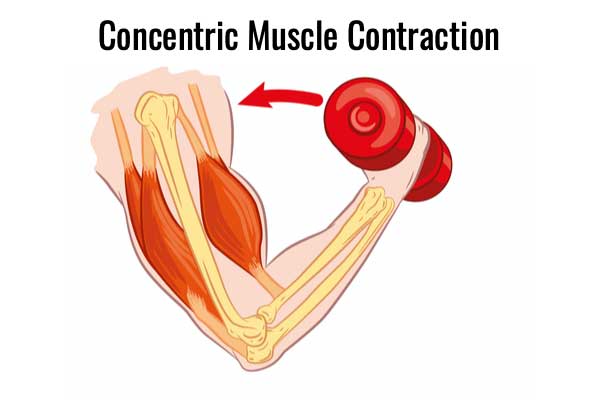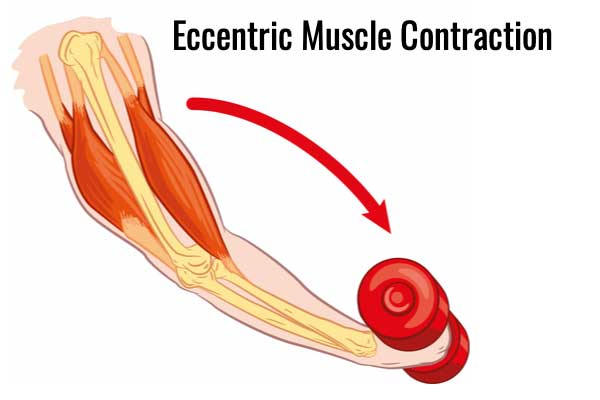
A muscle contraction can be defined by the change in muscle length that occurs, following a contraction within the muscle.
A concentric muscular contraction occurs when a muscle shortens in length, while overcoming a resistance or load. In this case, the muscle exerts more force than the resistance, or load, that it’s working against. This results in a shortening of the muscle as well as a change in the angle of the joint.

Eccentric muscle contractions occur when a muscle/muscle fibre lengthens while under tension. This type of contraction normally occurs against gravity such as the lowering phase of a bicep curl, or pull-up.
Eccentric contractions are known to have greater force production. In practical terms, this allows you to lower heavy weights in a controlled manner.
In effect, they act like a breaking force, allowing movement to occur in a controlled way, by counteracting and eliminating acceleration (from gravity) and helping to protect joints from injury.
The greater force production occurs due to increased recruitment of type II (fast twitch muscle fibres).
Despite this, eccentric contractions actually result in a lower level of recruitment of motor units. For this reason, high levels of eccentric contractions can cause temporary reductions in muscle strength, efficiency, and lead to increased muscle damage (micro-traumas) and delayed onset muscle soreness.
Importantly, these effects are temporary and once recovered (approximately 48hrs) we see increased strength, fatigue resistance and protection against DOMS. In fact, eccentric strength training is known to be an effective way to develop maximum strength and sports performance. In part, this is due to adaptations that occur following the muscle fibre damage – repair and muscle hypertrophy – as well as improved neuromuscular coordination.

One downside to the use of eccentric training is that it can result in a greater risk of injury. It can also cause increased levels of inflammation.
Isometric contractions occur when a muscle contracts without shortening or lengthening. In this case, the force exerted by the muscle is equal to the force that it’s resisting. Consequently, the muscle remains the same length.
Isometric contractions don’t just happen in muscle’s responsible for movement, they also occur in stabilising, or fixator muscles.
One point to note: unlike with dynamic (isotonic contractions) – where strength training leads to increased strength throughout the joint angle; with isometric contractions strength is only increased in the joint angle that is worked.

One important consideration with this type of muscle contraction is that it can lead to a rapid rise in blood pressure.
Isokinetic muscle contractions occur when a muscle contracts and shortens at a constant speed, or constant angular speed. To perform Isokinetic muscle contractions requires specialist equipment – known as an Isokinetic Dynamometer. This increases the load when it senses the muscle is speeding up, ensuring that the speed of movement is held constant throughout.